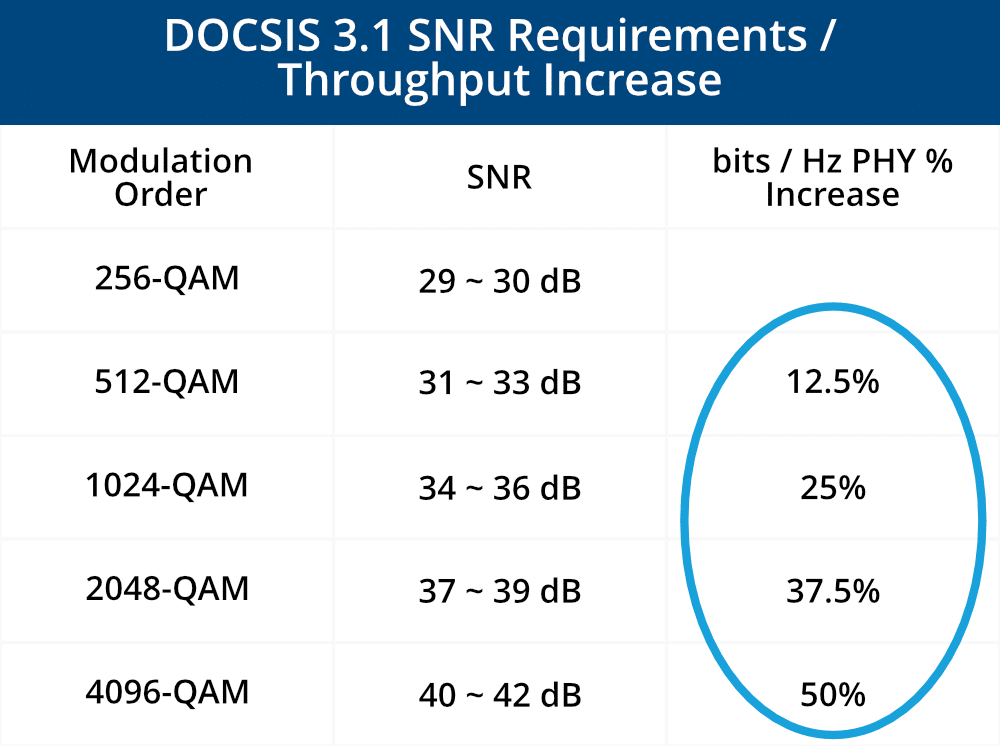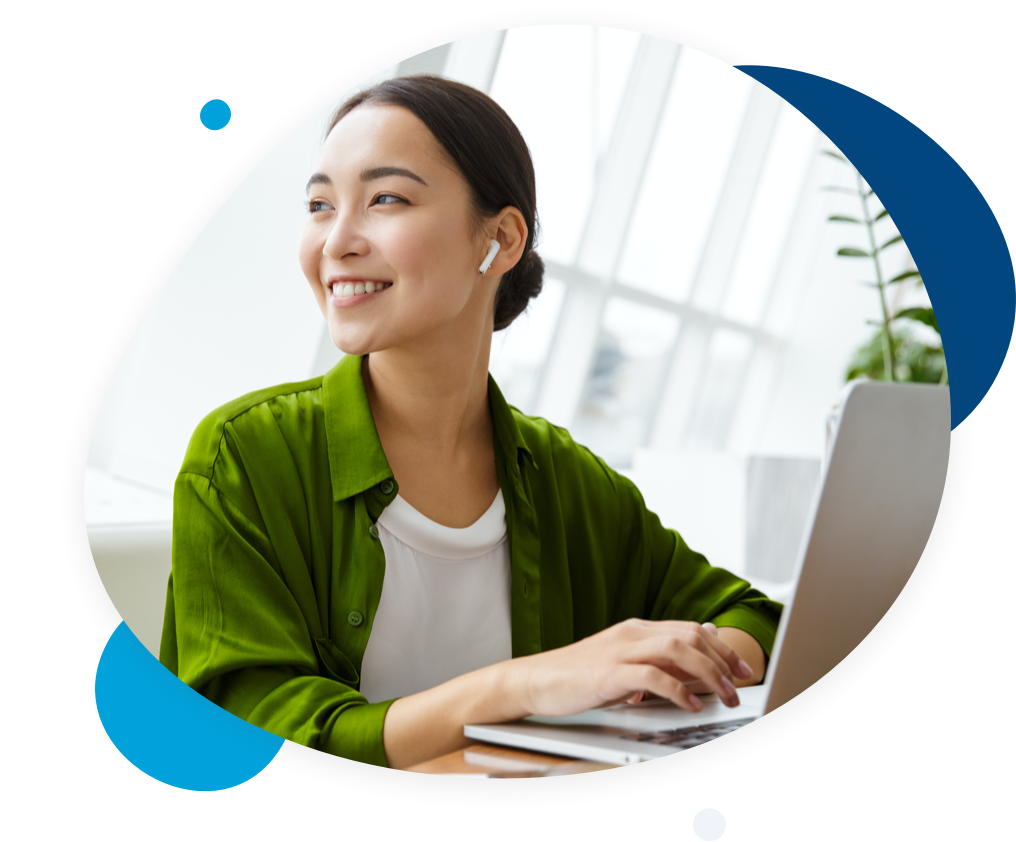LDPC (Low Density Parity Check)
LDPC is a revolutionary error correction method developed in the 1960s that was forgotten about until the mid-1990s when computers became fast enough to handle it. This provides error correction so great that it allows communication protocols to run in noisier environments or run even better and faster in a clean environment.
Modulation Profiles
Since the beginning of DOCSIS, all modems in a service group have always run at the same modulation rate. Most recently, 256 QAM for downstream was what we were stuck with using DOCSIS 3.0. With DOCSIS 3.1, not only do we get the ability to move up to the likes of 4096 QAM downstream, but every modem gets to select the profile that will work the best for it. In short, these profiles are chosen by using a table of SNR values that are paired with the different modulation profiles.
By using OFDM and LDPC, we can now achieve these new, higher modulation rates. Not only can each modem use the most optimum profile, thus giving it more speed potential, but the profiles can also have different modulations in use per subcarrier in each profile. Therefore, getting too correctly optimized to the plant it is on as it can. So, pair this optimal profile with the fact that 4096 QAM offers 50% more data throughput than 256 QAM, and you essentially have a bandwidth upgrade without doing a plant upgrade.



